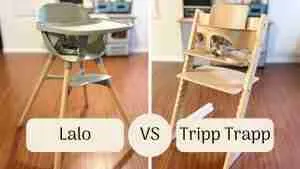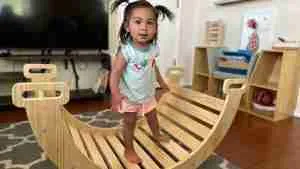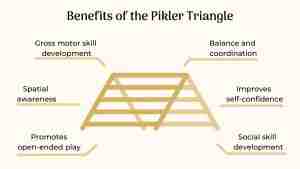
What Is A Weaning Table? 7 Reasons Why You Need One
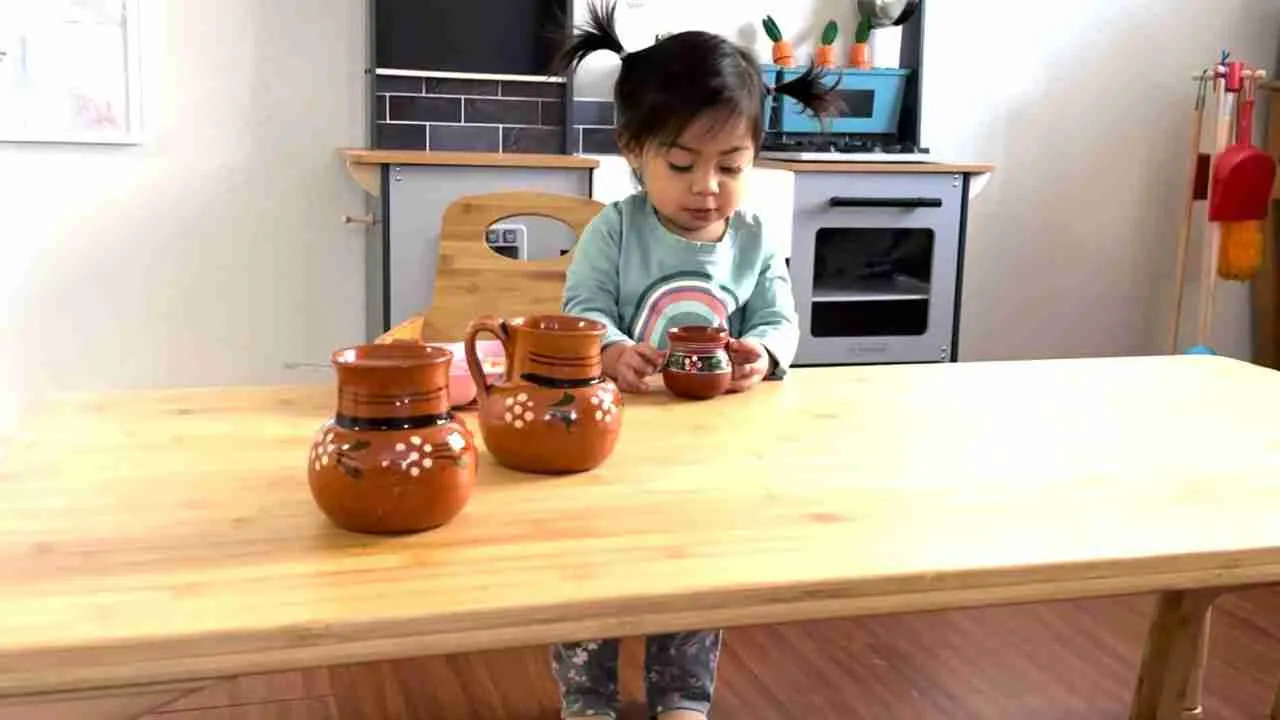
*Disclosure: I only recommend products I would use myself and all opinions expressed here are our own. This post may contain affiliate links that at no additional cost to you, I may earn a small commission. Thank you for your support!
Share this post
A weaning table plays an important role in your child’s development. This is why it is very common to see this simple piece of furniture in a Montessori classroom.
A weaning table is a child-sized table that fosters independence and self-feeding in your infant or toddler. Your child will learn how to set the table, clean up after themselves, and learn table manners.
Throughout my years in the Montessori setting, I have seen how children become self-sufficient just by adding a weaning table to their environment.
I will go more into detail about what is a weaning table and the many reasons you need to incorporate it as part of your child’s daily routine.
What is a weaning table?
A weaning table is a small, child-sized table designed to help your infant or toddler learn to eat independently.
Most weaning tables come with small chairs that are designed to be low to the ground to allow your child to easily climb up and sit on the chair comfortably.
Weaning tables also provide a safe and comfortable environment for your child to learn the skills they need to begin exploring solids and eat with minimal assistance from you.
And when you give them the freedom to explore on their own, they will develop hand-eye coordination, fine motor skills, and self-confidence.
The weaning table is often used in conjunction with child-sized utensils, plates, and cups to further encourage independence and autonomy in your child.
Why use a Montessori weaning table and chair?
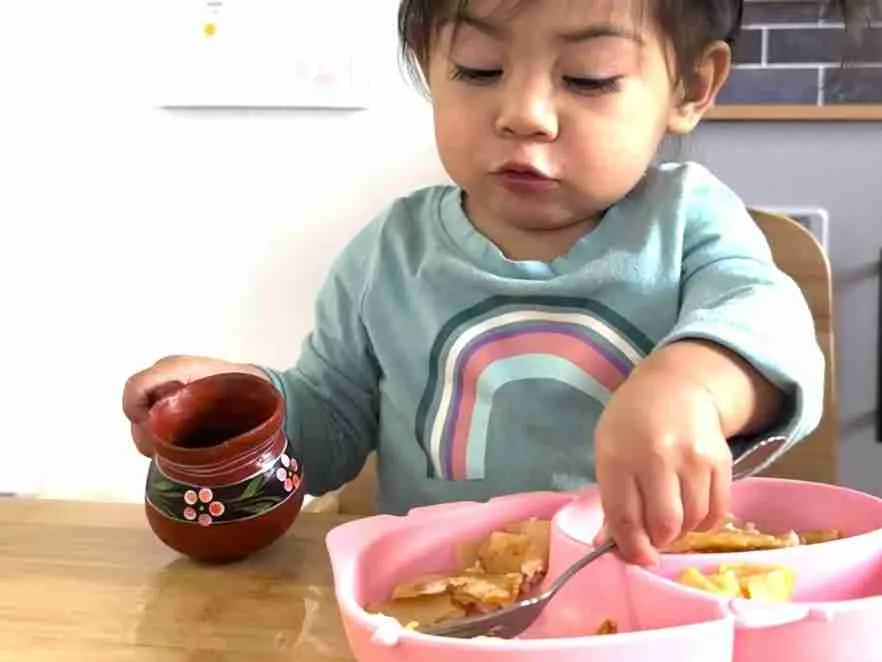
There are several reasons why a weaning table and chair can be beneficial for your child in learning to eat independently.
Here are 7 reasons why your child needs a weaning table:
1. Promotes independence
A weaning table plays a vital role in fostering your child’s independence from an early age.
When you provide their own dedicated space for mealtimes, they can take charge of their eating experiences.
They can sit and stand without needing assistance from you, and this boosts their confidence and sense of accomplishment.
For example, when your child sits at the weaning table and uses a small pitcher to pour water into their cup, they learn to do it on their own, gradually developing self-reliance.
2. Encourages good posture
The child-sized weaning table and chair allow your child to sit with their feet firmly on the ground.
The design of the chairs helps align their spine correctly and prevents slouching or hunching over while eating.
Your child will learn to keep their back straight and shoulders relaxed and this leads to better posture habits as they grow.
3. Builds fine motor skills
A weaning table offers a great opportunity for your child to work on their fine motor skills while they use utensils, cups, and dishes.
Your child has small hands and they may have a hard time grabbing regular size utensils.
But when you provide baby utensils and cups, they practice gripping, scooping, and self-feeding and this helps them improve their coordination and dexterity.
For example, when a baby uses a baby spoon to scoop up mashed vegetables from a small bowl, they refine their motor skills, which later assist in tasks like writing and drawing.
If you are looking for small plates, bowls, and utensils, I recommend the ones from ezpz, especially if you are starting baby-led weaning.
4. Provides a safe environment
The low height of the table ensures that your child can climb up and sit down without risking injury.
It reduces the risk of falls and provides a stable and secure space for your child to sit comfortably.
This is much safer than using a high chair which increases the likelihood of accidental tipping or climbing.
5. Supports Montessori philosophy
The Montessori method emphasizes the importance of hands-on learning and self-directed activities, and a weaning table allows your child to take an active role in their own development.
Give your child the freedom to participate in meal preparation like setting the table and cleaning up after themselves to nurture their independence.
For example, when your child arranges their plate and utensils on the table before they eat, they will feel a sense of responsibility and accomplishment.
6. Fosters a sense of belonging
Your child will feel like a valued member of the family during mealtimes when they have their own dedicated space at the table.
And when you include them in conversations and social interactions, they will feel a sense of belonging and this can strengthen your family bond.
For example, we always have conversations with our daughter like “What activities did you work on at school” or “I see that you made a butterfly. What color is your butterfly?”
This is a great way to bond while we enjoy the meal that you all prepared together.
7. Develops healthy eating habits
At first, your child will eat whatever you give them. But once they begin making their own food choices, they will learn the importance of eating healthy foods.
When your child serves themselves fruits and vegetables, they learn to appreciate nutritious options.
When to use a weaning table
We began using a weaning table when our daughter was about 6 or 7 months old, which is typically when babies begin to transition from breastfeeding to solid foods.
If your child is eating purees or soft foods and can sit up independently with little support, then this can be a good time to introduce them to the weaning table.
Baby-led weaning is a crucial developmental stage when your child’s motor skills, independence, and eating habits start to form.
And the weaning table will provide your child with a friendly environment to support their growth and learning needs.
What about a high chair?
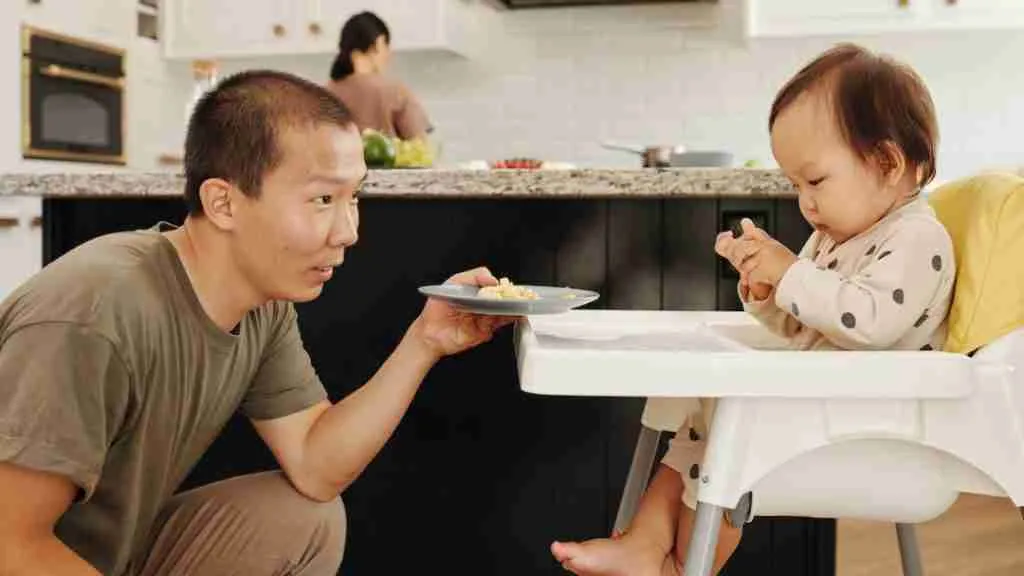
We preferred to use a weaning table instead of a high chair because the high chair does not provide the benefits that a weaning table does.
High chairs restrict your child’s movement and independence since they are strapped into the elevated seat.
And unlike the weaning table, high chairs often do not encourage good posture because your child’s feet may dangle and not touch the ground.
High chairs also create a physical barrier between your child and the dining table and this limits social interaction during meals.
So in a nutshell, a high chair keeps your child restrained and they don’t have the opportunity to explore freely and experiment with foods.
Make sure you check out my article where I compare the weaning table vs high chair.
What to look for in a weaning table
The weaning table we recommend is the one from Montessori and Me because it is small, affordable, and grows with your child.
I also have an article where I list the best weaning tables, so make sure you check it out.
If you decide to do your own research, make sure that the weaning table you select hits the following important points:
- Size: The table and chair should be appropriately sized for your child. It should be low enough to the ground so that your child can easily climb up and sit down, and the chair should be small enough so that their feet can touch the ground.
- Safety: Look for a weaning table that is sturdy and stable, with no sharp edges or corners that could cause injury. The table should be made of durable materials that can withstand the wear and tear of daily use.
- Comfort: A Montessori weaning table and chair should be comfortable for your child to sit in for extended periods. Look for a chair with a backrest that provides support, and a table with enough space for your child to move and explore.
- Accessibility: The weaning table should be easy for your child to reach and access. Consider a weaning table with an adjustable height feature to accommodate your child’s growing needs.
- Cleaning: Look for a weaning table that is easy to clean and maintain. It should be made of materials like wood or bamboo that can be wiped down easily and sanitized regularly.
When you consider the size, safety, comfort, accessibility, and cleaning of a Montessori weaning table and chair, you can ensure that your child has the best possible eating experience.
What to do next?
Now that you understand what is a weaning table and its benefits, go ahead and add it to your child’s environment and begin the baby-led weaning process.
I also have an article where I recommend the best products for baby-led weaning to make the transition from breastfeeding to solids easy and effortless.

Hello, I am Leslie. I am on a mission to help you support the growth and development of your child. With the right tools and proper guidance, you can navigate parenthood with confidence and assertion! My goal is to equip you with knowledge to help you construct a strong foundation for your child’s life.
Suggested articles
You May Also Like

Should Babies Wear Shoes? 3 Life-Changing Things To Know
Should babies wear shoes? According to the American Academy of Pediatrics, babies should only wear shoes once they begin walking.

11 Fun 1 Year Old Activities To Support Development
Wondering what activities you can do with your toddler? Here are 11 fun and engaging 1 year old activities that will surely help develop your child’s skills.
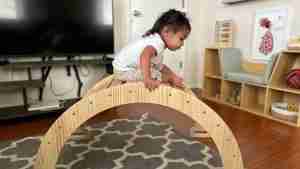
How To Introduce A Pikler Triangle To Your Baby
The best way to introduce a Pikler triangle to your baby is to allow them to touch it and naturally explore it.



